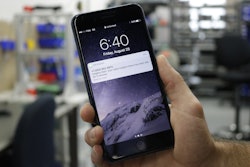3D Printed Space Parts From Pee
There’s a finite amount of room onboard space flights, so overpacking for long haul isn’t exactly an option. So planning for longer missions, to say Mars, can be more of challenge to make sure you’re prepared for anything. For example, there’s not a lot of room for spare parts and needed nutrients don’t have a long enough shelf life for make the whole journey, so researchers are looking to microorganisms to solve both of this issues. By engineering the microorganisms to feed on human waste and produce various elements, researchers are able to make nutrients like omega-3 fatty acids and 3D printable plastics.
3D printing is already proving to be an invaluable tool for making parts in space on demand. While the raw plastic material takes up room, it can be reshaped into whatever screw or tool needed, but eventually the finite resource will need to be restocked. Using a yeast species (on screen Yeast Species: Yarrowia lipolytica) the researching team can recycle waste products into useful end projects like monomers that can be linked together to make polyester polymers.
The yeast doesn't produce enough materials yet, but researchers are working on improving output and tweaking the microorganisms so they can make different types of polymers for different purposes.






















